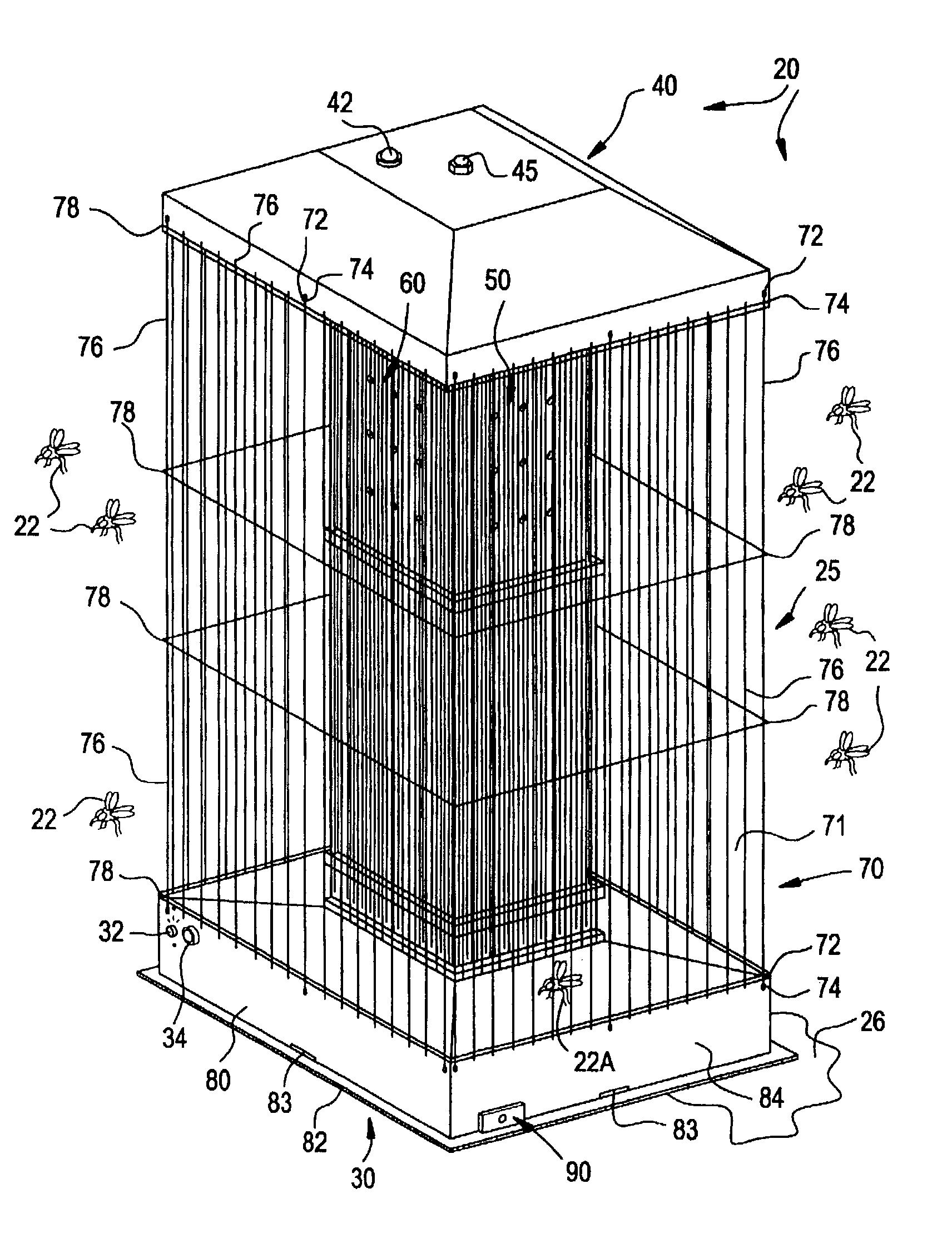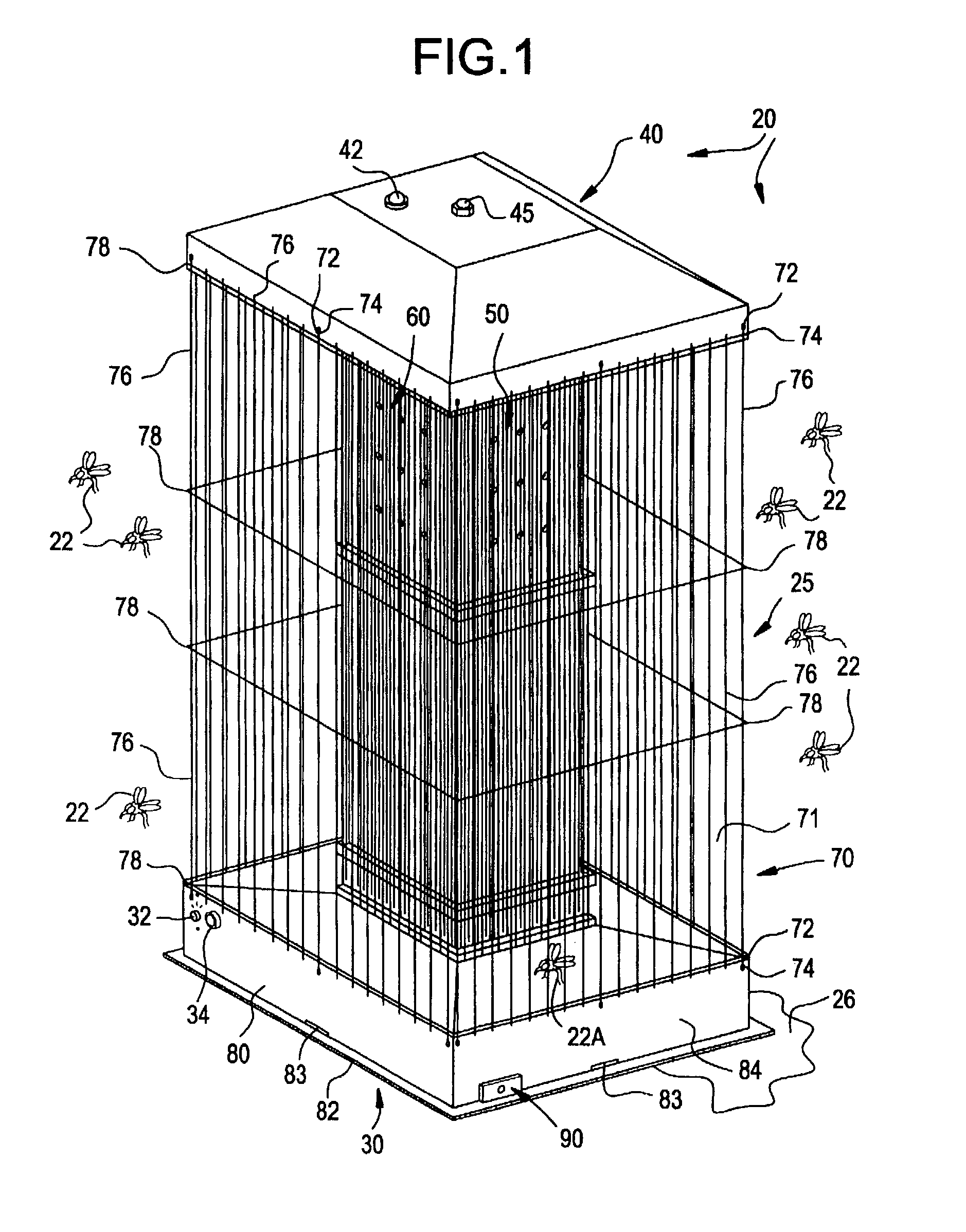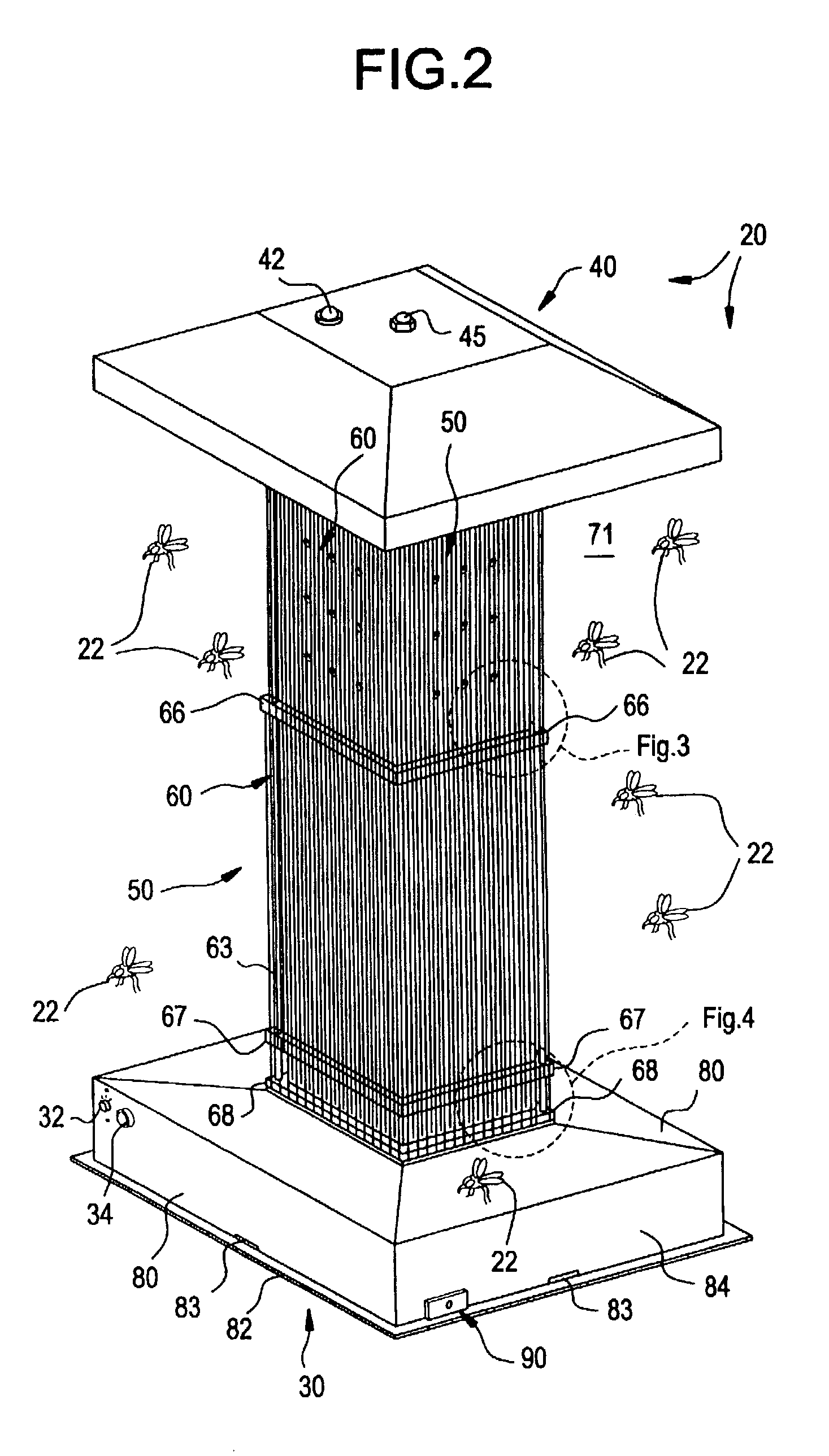Attracting mosquitoes for electrocution and/or trapping
a technology of electrocution and trapping, which is applied in the field of attracting and exterminating harmful insects, can solve the problems of inability of the grid to electrocute additional insects, short circuits, and ineffective prior art devices for killing mosquitoes
- Summary
- Abstract
- Description
- Claims
- Application Information
AI Technical Summary
Problems solved by technology
Method used
Image
Examples
Embodiment Construction
[0022]Referring more specially to the drawings, my improved mosquito killing system is generally designated by reference numeral 20. System 20 attracts mosquitoes 22 by actively projecting multiple infrared heat gradients and pressure differentials coupled with a wide variety of aromatics that simulate animal body heat and breathing.
[0023]System 20 comprises an elongated, generally parallelepiped housing 25 disposed upon a convenient supporting surface 26 (FIG. 1). The housing comprises a rectangular support base 30 and a spaced apart, truncated pyramidal roof 40 (FIGS. 1-2). The roof closes the tower interior. A switch 32 and photoelectric sensor system 34 control system operation, as discussed hereinafter. A pilot light 42 physically protrudes form roof 40 to indicate the operational status of system 20.
[0024]The roof 40 is secured to an internal heating tower 50 extending between the base 30 and the roof 40. A conventional bolt 45 extends through roof 40 to mate with a convention...
PUM
 Login to View More
Login to View More Abstract
Description
Claims
Application Information
 Login to View More
Login to View More - R&D
- Intellectual Property
- Life Sciences
- Materials
- Tech Scout
- Unparalleled Data Quality
- Higher Quality Content
- 60% Fewer Hallucinations
Browse by: Latest US Patents, China's latest patents, Technical Efficacy Thesaurus, Application Domain, Technology Topic, Popular Technical Reports.
© 2025 PatSnap. All rights reserved.Legal|Privacy policy|Modern Slavery Act Transparency Statement|Sitemap|About US| Contact US: help@patsnap.com



